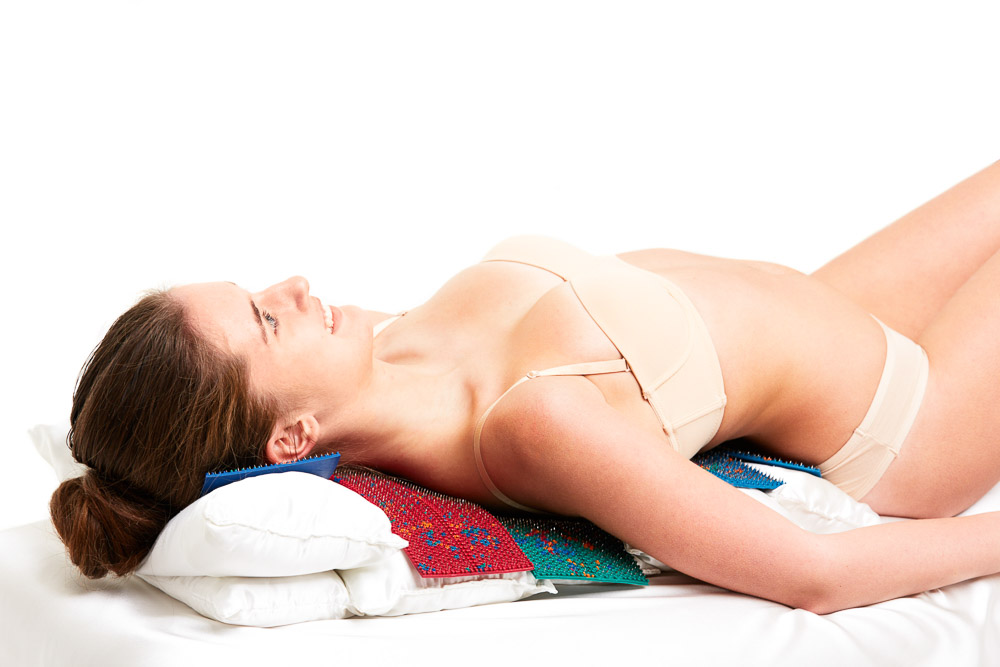Osteochondrosis of the cervical spine
1 What is cervical spine osteochondrosis
2 Symptoms of cervical osteochondrosis. Complications
What is cervical spine osteochondrosis
Cervical osteochondrosis is a progressive dystrophic-degenerative lesion of the intervertebral discs in the region of 1-7 vertebrae belonging to the cervical spine.
As a result of cervical osteochondrosis, deformation, exhaustion, and then damage to the vertebral bodies occurs. This disrupts the normal blood supply and nerve conduction in the neck and in those areas that are innervated by the nerve roots of the cervical spine.
Cervical osteochondrosis can be either isolated or combined with osteochondrosis of other parts - thoracic, lumbar and sacral.
Reasons
There are a number of factors predisposing to the development of osteochondrosis. These include:
- sedentary and sedentary lifestyle;
- sedentary work with static load on the neck;
- overweight, insufficient physical development;
- dysplastic processes of connective tissue;
- circulatory disorders in the neck;
- neck injuries;
- scoliosis, poor posture, uncomfortable pillows and mattresses;
- hereditary predisposition, metabolic defects.
Symptoms of cervical osteochondrosis. Complications
The cervical spine is the most vulnerable to the development of osteochondrosis. The vertebrae in it are the smallest in comparison with other parts of the spine, the muscular frame is not very pronounced, the weight of the head and upright posture act on the vertebrae. In the cervical spine, the vertebrae fit tightly to one another. Even a minimal change in them can lead to squeezing and even displacement of nerves and blood vessels.
The most characteristic symptom that patients complain of is pain in the cervical spine. Depending on the affected area, pain can be localized: in the clavicle and shoulder; throughout the cervical spine; on the anterior surface of the chest.
The first signs of cervical osteochondrosis may be minor: a feeling of heaviness in the head, headaches in the occipital region, pain in the neck in the evening, a feeling of numbness or tingling in the shoulders and arms.
Leading Symptoms
Vegetative-dystonic .
Severe "shooting" pain in the neck, in the area just below the occiput. Pain occurs after a long stay in one position, after sleep, constant tension of the neck muscles.
Difficulty moving the hand to the side, stiffness, numbness in the fingers. Due to compression of the vertebral arteries, neurological manifestations are observed: headache, nausea, dizziness, unreasonable jumps in blood pressure.
Spinal symptom.
Pain is localized behind the sternum on the left.
This type of pain should be distinguished from angina pain (with angina pectoris, nitroglycerin relieves, with osteochondrosis - no).
With a gradual disruption of the structure of the intervertebral discs, they are compressed and the nerve roots are pinched, as well as narrowing or pinching of the arteries and veins that pass in the region of the vertebral bodies.
This leads to the formation of special syndromes - radicular and ischemic:
- lesion of the roots of the first cervical vertebra (C1): abnormalities in the occiput;
- C2 lesion gives pain in the vertex and occiput;
- lesion of C3 gives pain in the neck from the side of infringement, decreased sensitivity in the tongue and hypoglossal muscles, speech impairment is possible;
- lesion of C4 and C5 gives pain in the shoulder and collarbone, decreased tone of the muscles of the head and neck, hiccups, breathing disorders and pain in the heart;
- C6 lesion occurs most often, gives pain from the neck to the scapula, forearm, up to the thumbs, skin sensitivity may suffer;
- C7 lesion - similar symptoms with pain in the neck, back of the shoulder, up to the back of the hand, impaired strength of the arms and decreased reflexes.
Circulatory disorders due to vascular compression in the cervical vertebrae can lead to headaches, up to migraine, dizziness, impaired vision and tinnitus, flashing flies in front of the eyes, disorder of autonomic functions.
There may be manifestations of cardiac syndrome with pressing pain in the heart, lack of air and palpitations, rhythm disturbances.
Complications .
Protrusion of intervertebral discs with the formation of a hernia (protrusion).
Rupture of the intervertebral disc with pinching of nerves and blood vessels, possible compression of the spinal cord, which can lead to death.
Lesions of the roots (radiculopathy), the formation of spines on the vertebral bodies (osteophytes) with the manifestation of paresis and paralysis.
In the presence of the above complaints, it is necessary to contact an orthopedic doctor or neurologist, conduct the necessary research.
Nutrition
Proper nutrition will significantly alleviate the condition with osteochondrosis. Nutrition should be complete. If a person has a normal body weight, then as a basis, you can take a therapeutic diet No. 15 according to Pevzner. It contains all the necessary minerals and an increased amount of fat and water soluble vitamins. It is necessary to eat foods high in natural chondroprotectors. Chondroitin is found in red fish, animal tendons and cartilage, and chicken meat.
Be sure to take clean water in a volume of 1.5-2 liters. Fluid is essential to prevent the intervertebral discs from drying out.
Traditional and non-traditional treatments
Healing
Today there are both traditional and non-traditional methods of treating osteochondrosis in the cervical spine.
Medication methods of treatment: symptomatic therapy with analgesics to relieve pain; taking non-steroidal anti-inflammatory drugs to relieve inflammation and tissue edema; antispasmodics; drugs to improve blood circulation; chondroprotectors to restore the structure of intervertebral discs.
Shown is a course of vitamin B group therapy, external agents for therapy - gels and ointments, creams with anti-inflammatory, warming and analgesic components.
During an exacerbation, it is recommended to wear a special collar (Shants collar).
Complications of cervical osteochondrosis with intervertebral hernias that impair sensitivity and blood circulation can be treated promptly.
The duration of treatment depends on the neglect of the condition, since osteochondrosis is a progressive chronic disease. Treatment can be long, and preventive courses can be carried out for life.
Physiotherapy treatments.
These include exercise therapy, magnetotherapy, balneotherapy, laser therapy, acupuncture, Lyapko's application therapy, massage.
Physiotherapy exercises
Be sure to do exercises for the treatment of cervical osteochondrosis several times a day every day. They include self-stretching, self-massage, a set of special exercises. Avoid neck injuries and heavy lifting.
It is necessary to combine prolonged sitting with periods of rest and warm-up.
The basis of the health of the cervical spine is a strong and healthy back, physical activity, a comfortable bed with anatomical pillows and a mattress, correct posture and proper nutrition.
Lyapko Application Therapy

Fig. 1
Application areas (fig. 1):
- basic 2, 3;
- additional 1, 4, 12, 13;
- auxiliary 20, 22, 28, 31.
The following applicators are recommended. Variants of applicators for the neck-collar zone (main and additional zones).
1. "Chamomile M" is applied in a lying position on zones 1, 2, 3 or 2, 3, 4. For even pressing, use rollers or a folded towel.

2. Applicator "Quadro", "Chance", "Narodny", "Needle massage pillow" fits both along and on the spine, with the capture of zones 1, 2, 3, 4 or across the back to zone 3, on the front surface of the chest, to zones 12, 13.
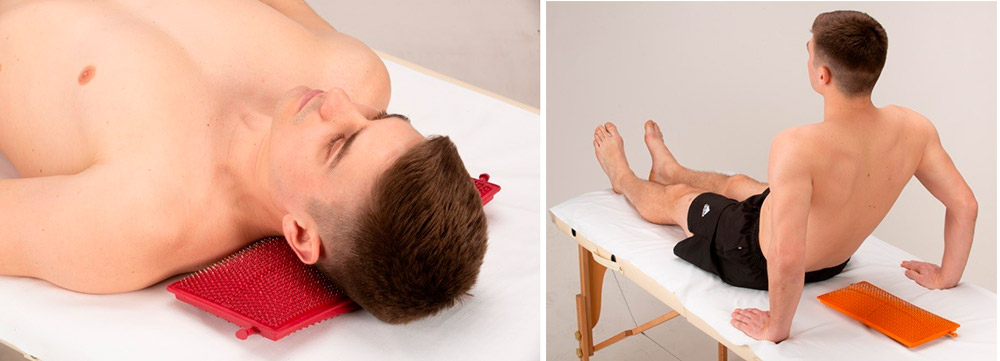
"Plus insoles" to be used in conjunction with the capture of zones 1, 2, 3, 4 in different versions: one insole lengthwise on zones 1, 2, 3 the second across on zone 4; on the anterior surface of the chest, in zones 12,13.
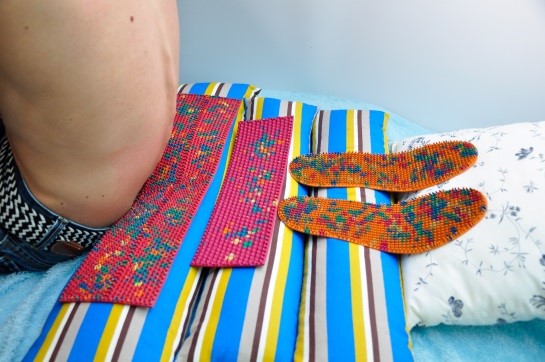
3. Belt "Kid" - is fixed across the spine in zone 3 or in the supine position (using as a normal applicator) in zones 1, 2, 3, 4; on the anterior surface of the chest, into zones 12, 13.
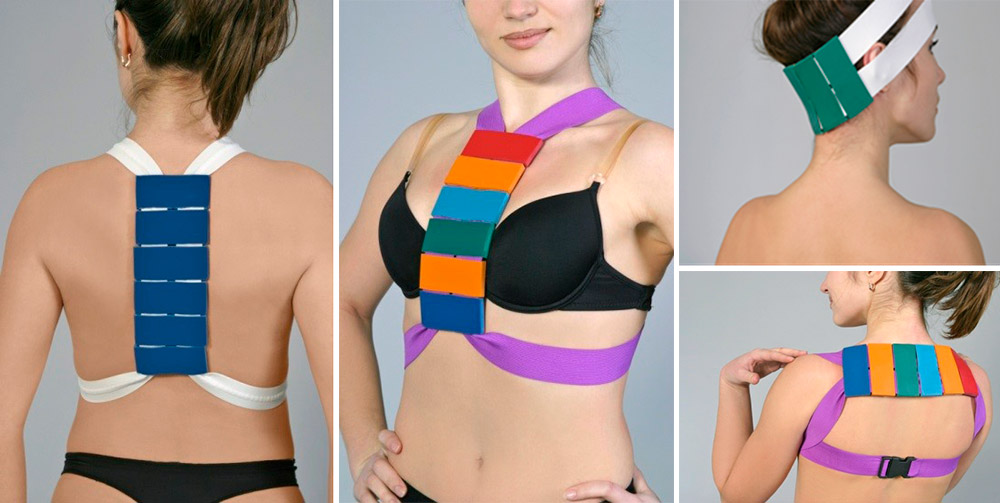
4. Belt "Universal M", fixed on the neck with the capture of zones 2.12; in the supine position across the spine to zone 3; on the anterior surface of the chest, in zones 12,13.
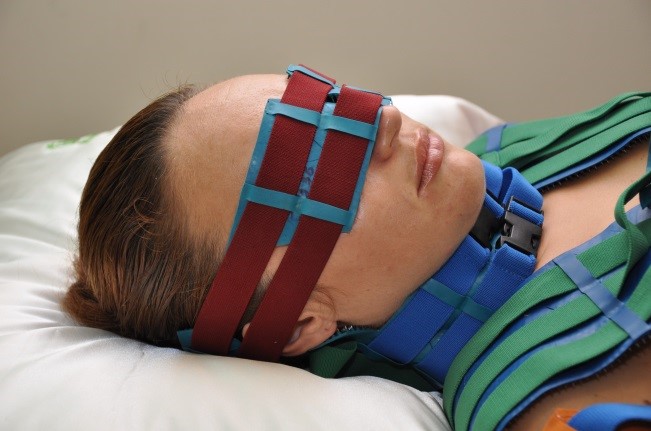
5. Belt "Magic tape" Health "1 cavity 3-segment wrapped around the neck, head, which allows you to capture zones 1,2,12.
6 .. Running in with "Large roller M", "Universal roller M", "Face roller M" zones 1, 2, 3, 4,12, 13.

Applicator options for auxiliary zones:
1. Apply the "Camomile M" applicator to zone 20, fixing it with rubber straps, rolling the zone with 20 rollers.
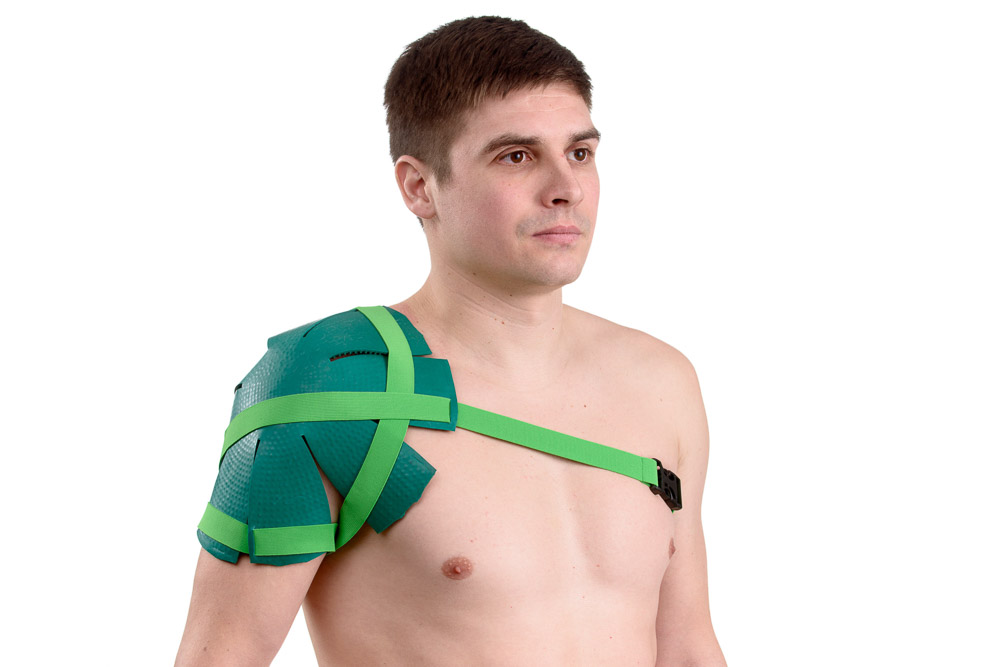
2.Belt "Magic tape" Health "1 cavity 5-7 segment arms are wrapped: zones 20, 22, legs of zones 28, 31.
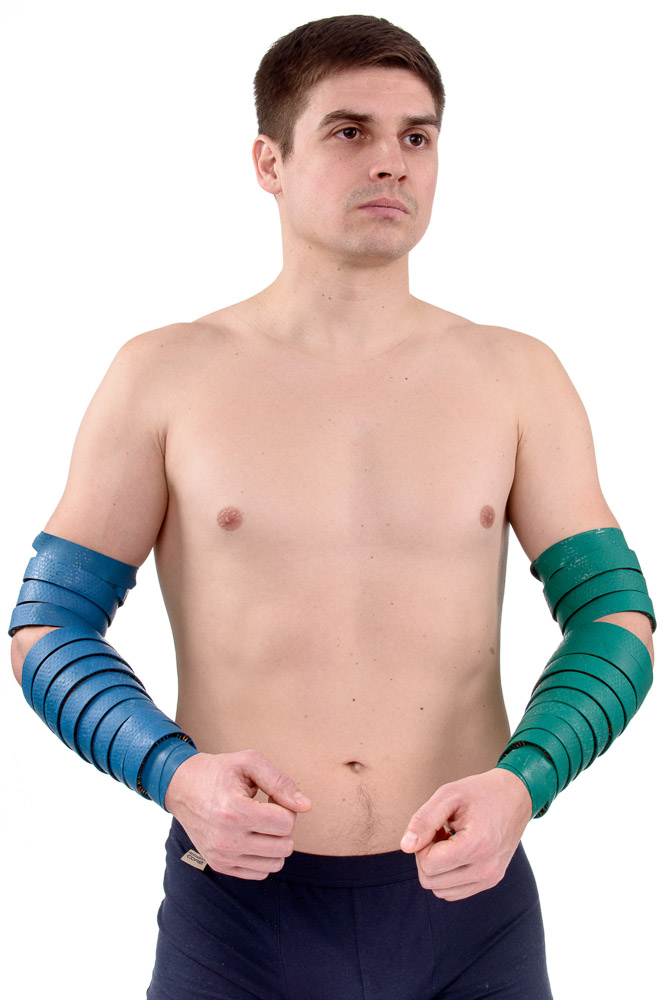
3. Run-in with the "Large roller M", "Universal roller M", "Face roller M" zones 20, 22 on the hands; 28, 31 on my feet.

4. Plus insoles on the feet - zone 31.
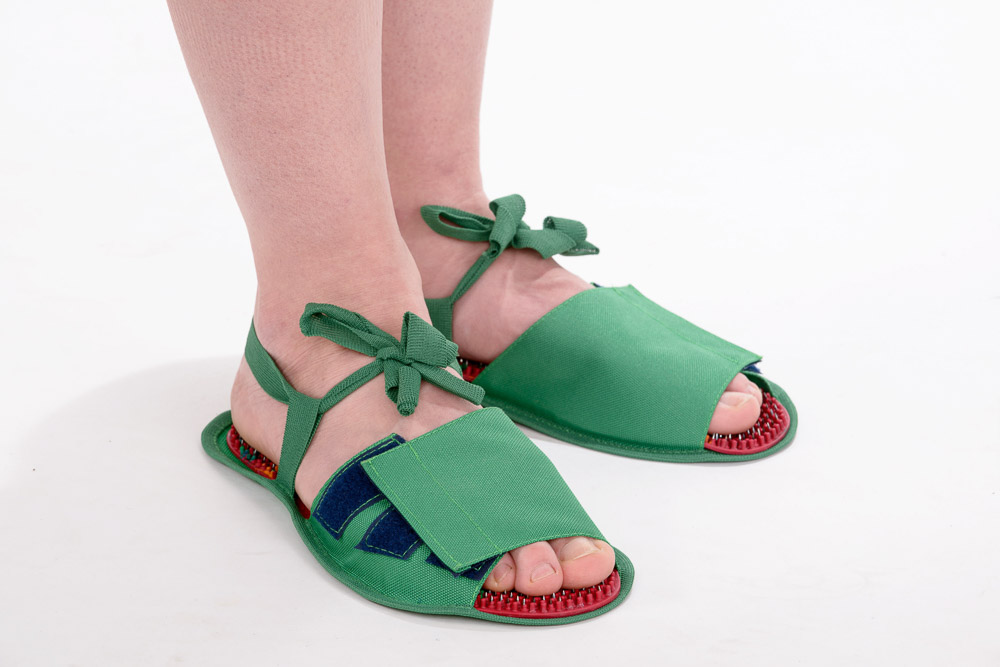
General guidelines
When using the applicator, the main, additional and zones of maximum pain are used, but in case of very pronounced pain, applicators should be applied above and below the painful zone, or points and zones on the opposite side should be used. Exposure time 10-30 minutes.
If cervical osteochondrosis is combined with osteochondrosis of other parts - thoracic, lumbar and sacral, then application therapy can be applied simultaneously or in turn to all parts of the spine. The larger the impact area, the better the effect.
